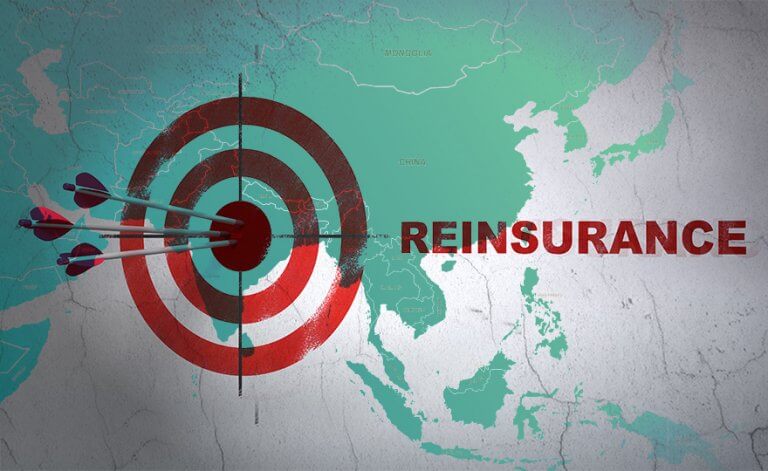South-East Asia’s reinsurers face underwriting challenge
September 1 2021 by Andrew Tjaardstra
Reinsurance firms operating in South-East Asia are increasingly focusing on underwriting profitability as they come to terms with a low interest rate environment and stronger competition.
“In the first half of 2021, South-East Asia’s reinsurers exhibited moderate improvements in underwriting performance due to rate corrections observed notably in property treaty 2021 renewals and a decline in travel, motor and workers’ compensation claims driven by Covid-19 restrictions,” Kanika Thukral, a senior financial analyst at AM Best, told InsuranceAsia News (IAN).
According to Willis Re’s January 2021 renewal report, Asian reinsurance buyers overall saw flat to low single digit rate increases for loss-free renewals in property, while loss hit accounts saw rate increases between 5-10%.
However, Singapore-based Thukral said that pricing increases “remain insufficient for South-East Asia reinsurers to achieve notable improvements” Thukral added that “further rate corrections and ongoing underwriting discipline” are required for reinsurers to “achieve sustainable operating performance metrics that meet the cost of capital over the medium term.”
The region’s reinsurers were hit by Covid-19 driven investment shocks in 2020 and an expectation of suppressed interest rates over the medium term, according to an August 31 AM Best report. As a result, reinsurers have been recalibrating underwriting strategies, improving expense management, rebalancing portfolios and trying to better manage their exposure to natural catastrophes.
In addition, reinsurers’ combined ratios have been above 100% for the last five years (2016-20) and the rating agency expects the market to face headwinds from a combination of strong competition, rate pressure, excess capacity and high nat cat activity. While international reinsurers have boosted regional capacity, especially for property, engineering and marine risks, they have added to rate pressures leading to some underperformance, the report noted.
On the other hand, South-East Asia’s reinsurers benefitted from a negligible impact of business interruption claims associated with Covid-19 due to infectious disease and business interruption exclusions brought in following the 2003 SARS outbreak.
Nat cat exposure
The growth of South-East Asia’s nat cat exposure is also helping drive reinsurance demand and shows the potential for top line growth.
The Swiss Re Institute’s nat cat resilience index has said that emerging Asia-Pacific is the least resilient region — with over 96% of nat cat losses not insured. In Indonesia, India and the Philippines, only 5-7% of physical assets are estimated to be insured against major perils.
And underwriting performance in this area also improved last year. After some large cat losses in 2018/19, mainly in Japan, reinsurers’ 2020 loss experience was moderate — with only a few major storms in the Philippines, Vietnam and Korea, AM Best noted. However, 2021 has already seen an earthquake in Fukushima that is estimated to have exceeded US$2 billion in insured losses.
Reinsurers will be hoping for a calm second half to the year in the region but life and health players are already bracing for some large payouts as the full impact of Covid-19 plays out across South-East Asia.
-
APAC’s block life reinsurance market to thrive amid regulatory changes and capital optimisation, but oversight looms
- June 30
Japan has been home to some of the larger deals, but demand is also seen in the likes of Hong Kong, Singapore, South Korea and Taiwan.
-
Insuring prosperity: APAC’s dynamic fine art and specie market in the frame as risk landscape, extreme weather drive demand
- June 26
As China's influence wanes, markets like Japan, South Korea, and Singapore are gaining traction, with family offices and new private museums in nearby regions driving demand for coverage and competition.
-
In unique Asia, underwriters look to stay dialed amid ‘unprecedented wave’ of cyber attacks
- June 24
A surge in cyberattacks is likely behind a 14% rise in large cyber claims in Asia during the first half of last year, with a new report shining a light on attacks on the financial services sector.
-
Strait of Hormuz tanker collision highlights dark fleet dangers, but not seen as war event
- June 19
Adalynn and Front Eagle collided on Tuesday in the Strait of Hormuz amid the ongoing tensions between Iran and Israel.
-
Allianz General | Allianz General combines innovative protection solutions while powering social good to lead Malaysian market
The carrier proactively addresses emerging risks and evolving customer protection needs while giving back to the community.
-
Sedgwick | Asia’s Energy Transformation – Balancing Growth, Risk and Renewables
Energy market presents unique risks, especially in a region which includes China and Japan as well as developing nations like Vietnam and the Philippines.
-
Beazley | Turbulent Waters: the maritime energy transition challenge
Businesses are facing a complex transition to non-carbon energy sources amid a push to achieve net-zero emissions for the marine sector by 2050.
-
Aon | Navigating shifts in the global and Asia insurance markets
Neelay Patel, Aon head of growth for Asia, says the market in Asia is at an ‘interesting stage of the cycle’.

